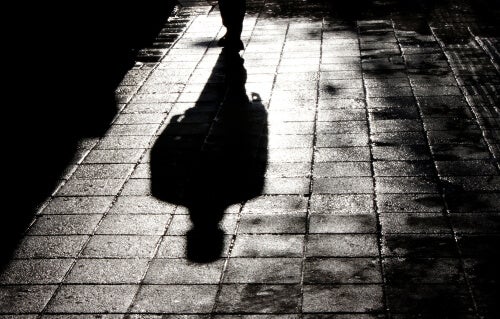Psychological Characteristics of Prejudice in the Process of Radicalization

The psychosocial characteristics of prejudice influence the process of radicalization. The heightened incidence of radicalization in society is most prevalent in critical situations that originate in ideological motivations or those of other types (Moyano-Pacheco, 2017). The perception of risk has increased nowadays due to the impact of media reporting on terrorism and political violence.
For scholars in the social sciences, understanding the process of radicalization and the phenomenon of terrorism is important. It’s a prerequisite for preventing violence. Additionally, it’s also important for reintegrating those individuals who have fallen under the influence of violent groups into society. One of the most interesting aspects of this process is that of the recruitment and conscription of vulnerable individuals.
Radicalization is a complex and multidimensional process. Multiple variables can become factors that contribute to its development. As such, experts must analyze this process while keeping all of those factors in mind. In other words, they have to be mindful of the interaction of the various psychosocial variables involved (Kruglanski et al., 2014).
Why is it that a person adopts political or religious beliefs outside of the mainstream opinions? That’s the question that psychology seeks to answer on the factors influencing the process of radicalization.
“Freedom conceived intersubjectively distinguishes itself from the arbitrary freedom of the isolated individual. No one is free until we are all free.”
-Jürgen Habermas-

The process of radicalization
You can define the concept of radicalization as a process wherein an individual’s propensity to violence increases. Specifically, their cognitions, emotions, and behaviors become more violent. This is all for the sake of intergroup conflict. The radicals often do all of this in a the name of an ideology that provides a cover for it (Moyano and Trujillo, 2013).
Everything points to radicalization as a preliminary step toward the commission of violent acts. Of course, not all radicals come to execute these actions. This means that radicalization is just the first step to this type of violence. Nevertheless, radicalization alone doesn’t necessarily include violence.
You could say that radicalization is more a process than a state. Throughout the course of this process, psychosocial factors play a very important role (Moyano-Pacheco, 2017). There are currently many popular myths out there that should be debunked. This is true of the myths propagated by both the media as well as so-called “common knowledge”.
One of these is the idea that there’s a standard profile of radicals and terrorists. After systematically reviewing the available biographies, you can conclude that there are a variety of personality profiles. These radicals can come from various educational and socioeconomic backgrounds (Victoroff, 2005).
It seems as though the most productive point of focus when analyzing radicalization and terrorism are the psychosocial processes. That’s probably more useful than looking at the characteristics of the individual in question (Moyano and Trujillo, 2013).
“Sometimes silence is the worst lie.”
-Miguel de Unamuno-
Psychological characteristics of prejudice
Prejudice can adopt different forms and manifestations. It also has diverse origins depending on the target group. Gordon Allport classifies prejudice according to the psychosocial definitions. He defines it as hatred or hostility based on defective or inflexible generalizations.
There’s a general explanation for the biases that prejudices produces, generally toward members of external groups to one’s own. This explanation rests on the strength of the need for social belonging. People generally feel a sense of commitment and emotional involvement with the group to which they belong. This may lead them to make the group a part of their own identity.
Your image of yourself is linked to the image of your group. This will often lead people to defend that group’s values. The protection of the “us” can compel people to discriminate and exclude those who aren’t part of their group.
Social discourse and rhetoric feed prejudices and stereotypes. These are often useful to the powerful when trying to control intergroup relationships. This is especially true in the social and political realms.
Delegitimization stereotypes drive some to exclude groups of people from the field of acceptable rules and values. That leads to a dehumanization that authorizes the expression of contempt and fear. Many radicals then use this to justify the violent acts and prejudice they inflict against other groups.

When prejudice gives way to the process of radicalization
Dominant social groups tend to stress particularities and discriminate against identities. Members of minority groups, on the other hand, manifest a tendency to homogenize. They also define their social identity on the basis of the characteristics the majority attributes to their group.
This leads us to consider the effects of social categorization. More generally than that, it also leads to ask what the effects of prejudices and stereotypes are upon their targets. Another matter is how these can come to legitimize violence against minority groups. And, finally, how this could result in even more violence from these groups against the majority.
The psychosocial characteristics of prejudice and our cognitive processes also tend to develop stereotypes on people who are members of external groups. In order to soften this, you have to focus on each person individually. You would do this instead of seeing them as a member of their group. This process requires the use of rational thinking.
The process is also probably accompanied by corresponding stereotypes. There needs to be a course of protection of minorities for the different minorities. As the scientific articles we cite show, they’re the most likely targets of such violence.
“Global terrorism is extreme both in its lack of realistic goals and in its cynical exploitation of the vulnerability of complex systems.”
-Jürgen Habermas-
All cited sources were thoroughly reviewed by our team to ensure their quality, reliability, currency, and validity. The bibliography of this article was considered reliable and of academic or scientific accuracy.
Kruglanski, AW, Gelfand, MJ, Bélanger, JJ, Sheveland, A., Hetiarachchi, M. y Gunaratna, R. (2014). La psicología de la radicalización y la desradicalización: cómo la búsqueda de importancia impacta el extremismo violento. Psicología política , 35 , 69-93.
Moyano-Pacheco, M. (2017). Algunas claves sobre radicalización violenta y terrorismo.
Moyano, M., Trujillo, H., & Kruglanski, A. W. (2013). Radicalización islamista y terrorismo: claves psicosociales. Universidad de Granada.
Muelas Lobato, R. (2019). El camino de la radicalización: rutas psicosociales hacia el prejuicio y el extremismo violento en conflictos religiosos y culturales.
Peco Yeste, M. (2018). Una aproximación sistémica a la radicalización violenta: Cerrando el círculo alrededor de la “vía épica”.
Soler, M. P. (2016). La analogía entre la radicalización islámica y una campaña de marketing exitosa. bie3: Boletín IEEE, (2), 726-742.
Victoroff, J. (2005). La mente del terrorista: una revisión y crítica de los enfoques psicológicos. Revista de resolución de conflictos , 49 (1), 3-42.
This text is provided for informational purposes only and does not replace consultation with a professional. If in doubt, consult your specialist.








